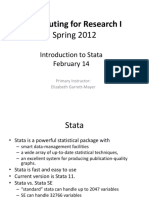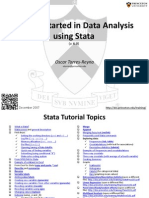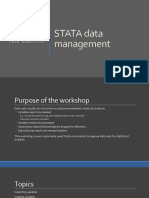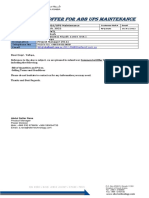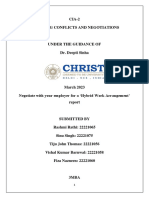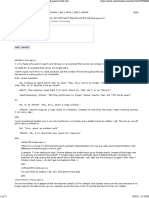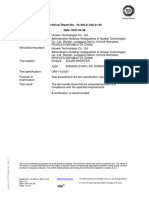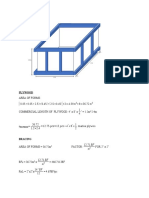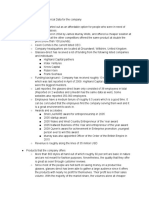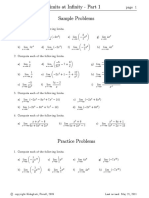0% found this document useful (0 votes)
88 views43 pagesStata Class Notes
Here are the key steps in conducting a bivariate analysis in Stata:
1. Select the two variables you want to analyze - one independent variable and one dependent variable.
2. Cross-tabulate the variables using the tabulate command. For example: tab sex education.
3. Add options like row or column to view percentages down rows or columns.
4. To test for statistical significance, add the chi2 option. This will run a chi-squared test.
5. Interpret the results. A low p-value (typically <0.05) indicates the relationship is statistically significant.
6. You can also use other commands like tabodds and mlogit for more advanced b
Uploaded by
Mido MedCopyright
© © All Rights Reserved
We take content rights seriously. If you suspect this is your content, claim it here.
Available Formats
Download as PDF, TXT or read online on Scribd
0% found this document useful (0 votes)
88 views43 pagesStata Class Notes
Here are the key steps in conducting a bivariate analysis in Stata:
1. Select the two variables you want to analyze - one independent variable and one dependent variable.
2. Cross-tabulate the variables using the tabulate command. For example: tab sex education.
3. Add options like row or column to view percentages down rows or columns.
4. To test for statistical significance, add the chi2 option. This will run a chi-squared test.
5. Interpret the results. A low p-value (typically <0.05) indicates the relationship is statistically significant.
6. You can also use other commands like tabodds and mlogit for more advanced b
Uploaded by
Mido MedCopyright
© © All Rights Reserved
We take content rights seriously. If you suspect this is your content, claim it here.
Available Formats
Download as PDF, TXT or read online on Scribd
/ 43





